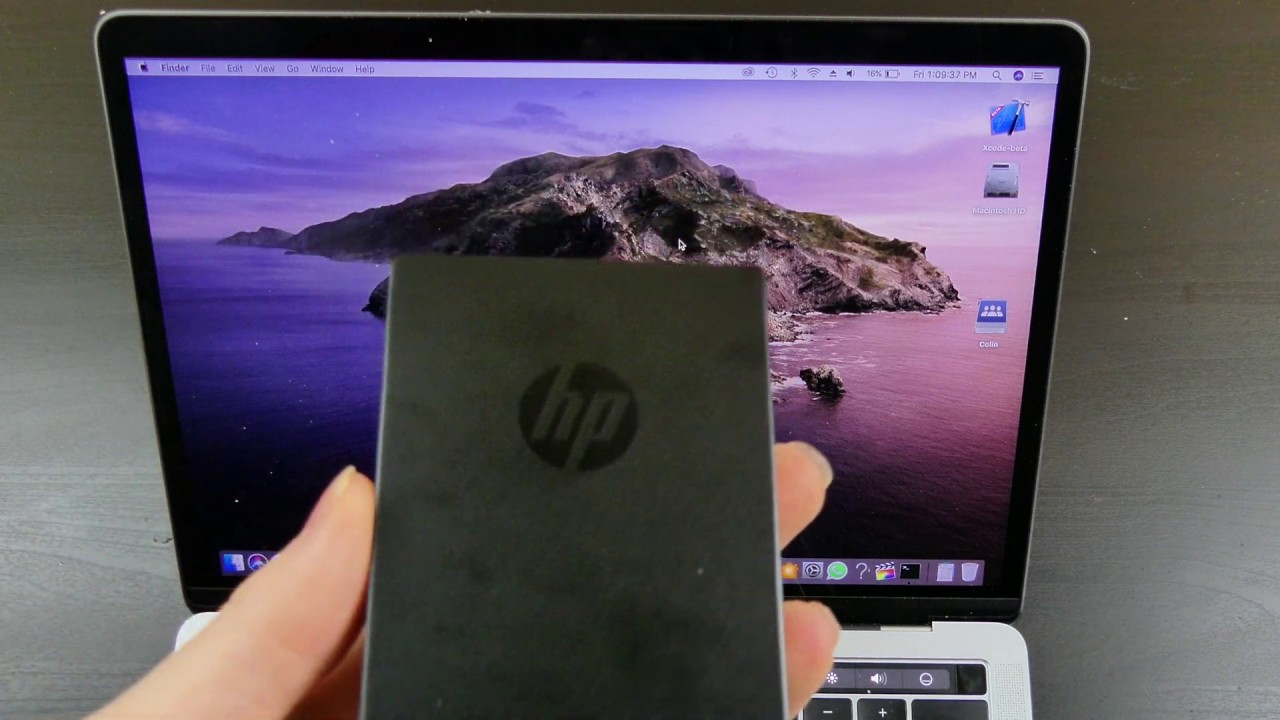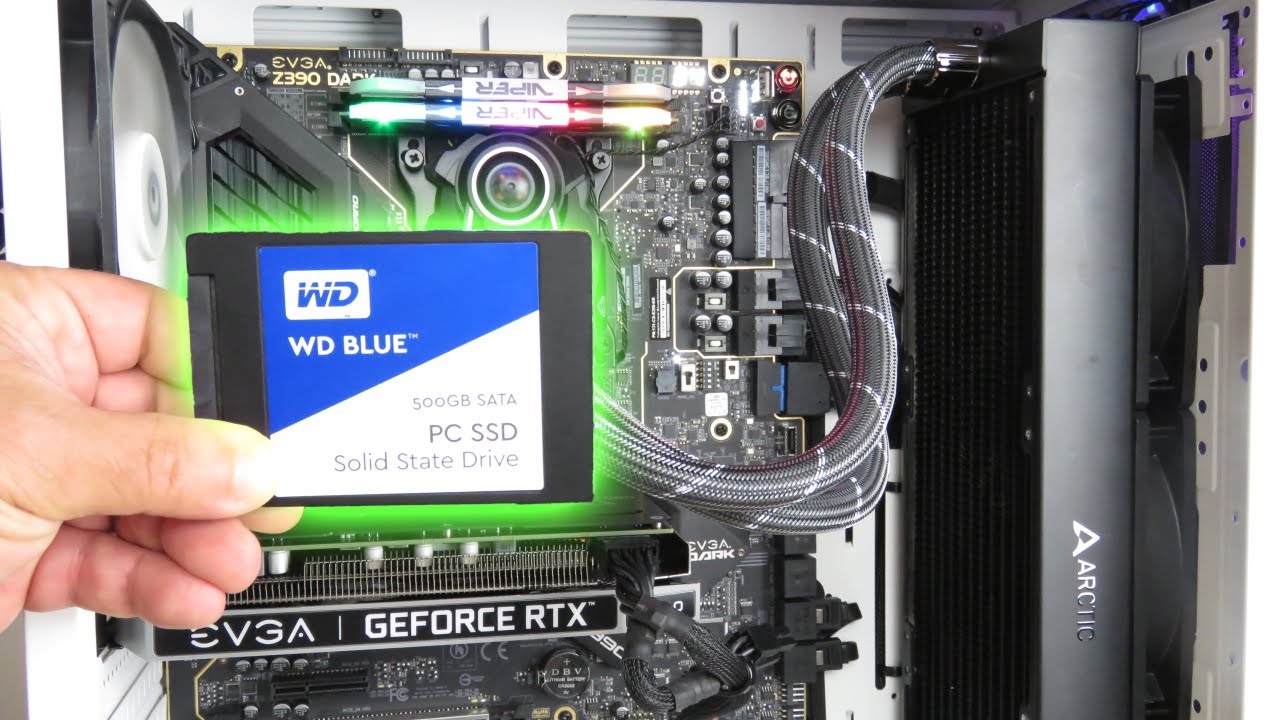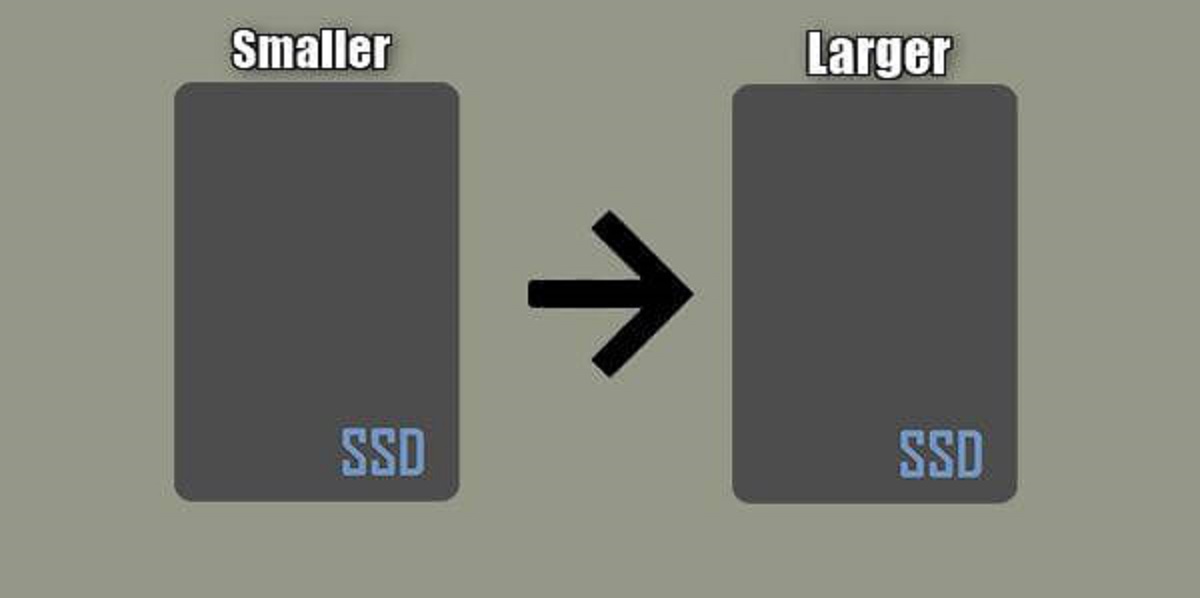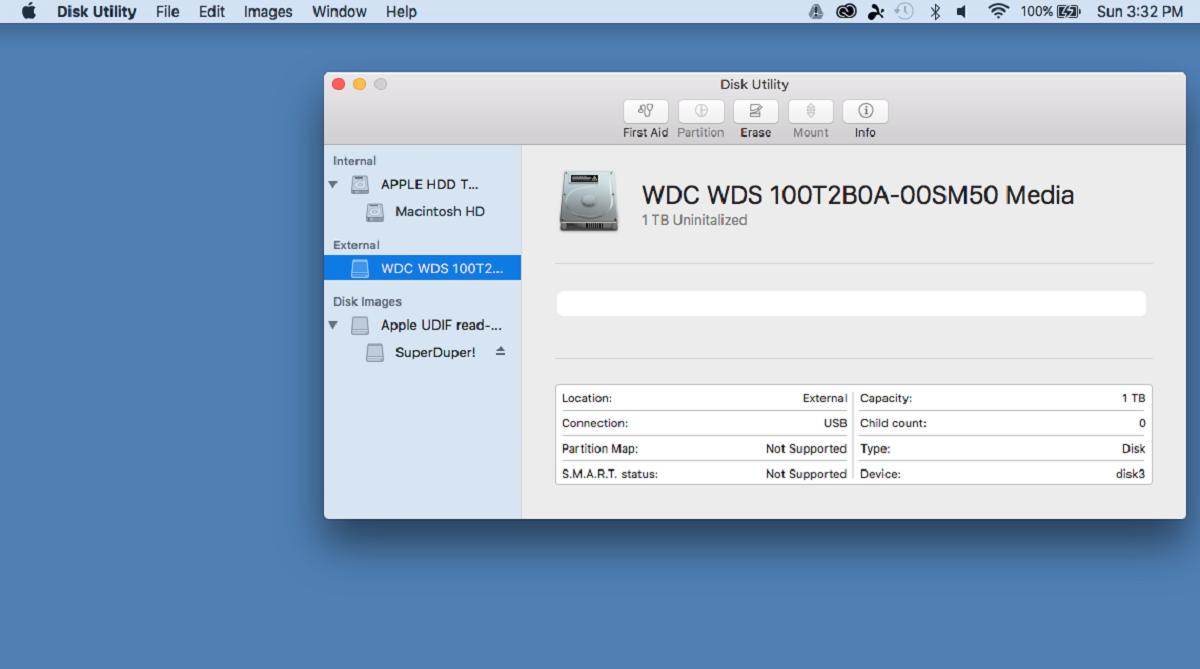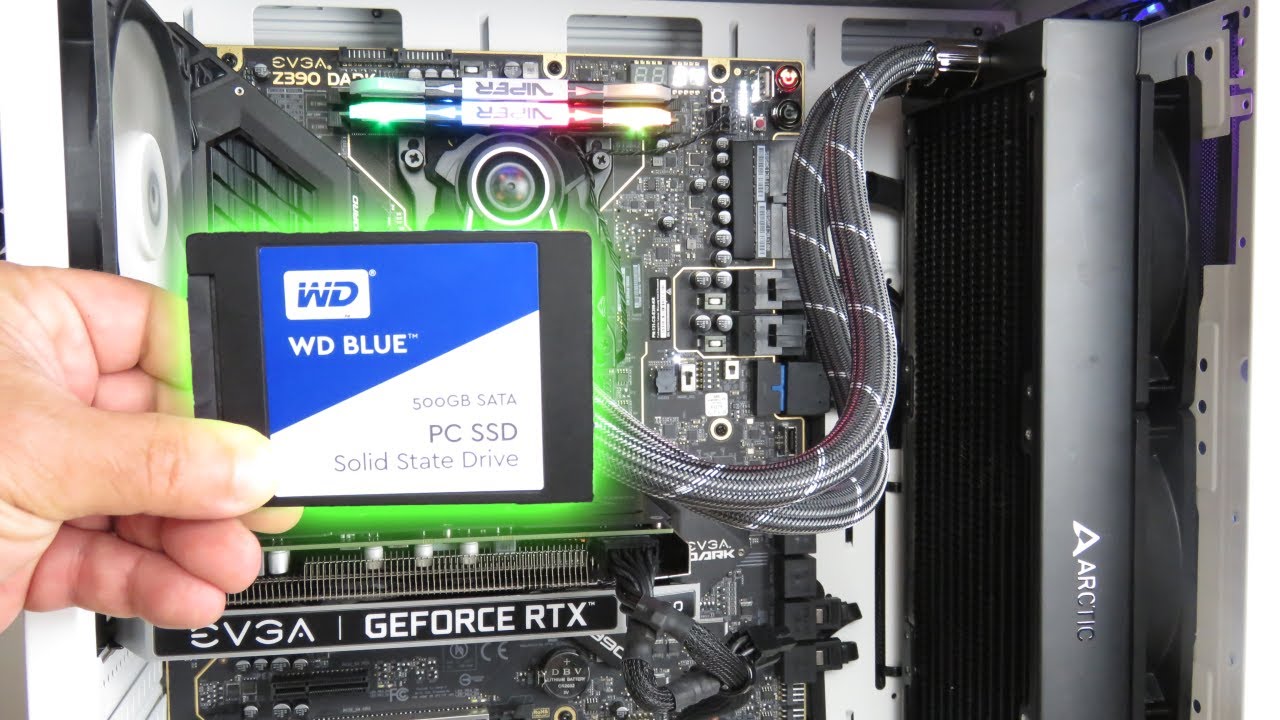Why Backing Up Your SSD is Important
Backing up your SSD (Solid-State Drive) is crucial for ensuring the safety and security of your valuable data. SSDs are highly reliable and fast storage devices, but like any other technology, they are not immune to failures or unforeseen events. Whether it’s accidental deletion, software corruption, hardware malfunction, or even theft or natural disasters, your data is always at risk.
Here are the main reasons why backing up your SSD is important:
- Data Loss Prevention: Accidents happen, and human errors can lead to the loss of files or entire folders. Having a backup allows you to recover your data quickly and easily, minimizing any potential disruption or downtime.
- Hardware Failure Protection: Even reliable SSDs can fail due to various factors such as power surges, manufacturing defects, or wear and tear. Regular backups provide an additional layer of protection against hardware failures, ensuring you don’t lose your important files.
- Protection against Cyberattacks: With the increasing prevalence of malware, ransomware, and other cyber threats, your data is constantly at risk. By regularly backing up your SSD, you reduce the chances of losing your files in the event of a security breach or malicious attack.
- Easy System Recovery: If your operating system or software becomes corrupted or compromised, having a recent backup of your SSD enables you to restore your system to a previous stable state quickly. This can save you significant time and effort in reinstalling and reconfiguring everything from scratch.
- Seamless Hardware Upgrade: When you decide to upgrade your SSD to a larger capacity or a faster model, having a backup allows you to transfer your data to the new drive effortlessly. This makes the migration process smooth and ensures you don’t lose any valuable files during the upgrade.
Remember, data loss can occur at any time, and without a backup, recovering your files can become a challenging and costly endeavor. Taking proactive steps to regularly back up your SSD is a simple and effective way to protect your data and maintain peace of mind.
Different Backup Methods for SSDs
When it comes to backing up your SSD (Solid-State Drive), there are several methods you can choose from. Each method offers its own advantages and considerations, depending on your needs and preferences. Here are some of the most common backup methods:
- External Hard Drive Backup: One of the simplest and most traditional ways to back up your SSD is by using an external hard drive. You can connect the external drive to your computer and copy your important files or folders manually. This method provides a physical backup that you can store in a safe place.
- Cloud Backup: Cloud backup is becoming increasingly popular as it offers convenience and accessibility. With cloud backup services, your data is securely stored on remote servers. You can schedule automated backups or manually upload your files to the cloud. This method ensures that your data is protected from physical damage or loss.
- Creating a System Image: Creating a system image is another effective way to back up your SSD. It involves creating a snapshot of your entire operating system, including all files, settings, and applications. This image can be used to restore your system to its previous state in case of a system failure or error.
- Using Backup Software: Backup software provides a comprehensive and efficient way to back up your SSD. These programs offer various features, such as automated backups, incremental backups (only backing up changed files), and encryption for added security. Choose a reliable backup software that suits your needs and follow the instructions to set up regular backups.
- Setting up a Regular Backup Schedule: Regardless of the method you choose, it’s essential to establish a regular backup schedule. Depending on the frequency of your data changes, you can opt for daily, weekly, or monthly backups. Consistency is key to ensure that your backups are up to date and reflect the most recent changes in your files.
Keep in mind that no single backup method is foolproof, and it’s often recommended to employ a combination of methods for added redundancy and protection. Assess your specific requirements and consider factors such as convenience, storage capacity, and security when selecting the backup methods that best fit your needs. Remember, a backup is only effective if it’s up to date and easily accessible when you need it.
External Hard Drive Backup
One of the simplest and most traditional methods of backing up your SSD (Solid-State Drive) is by using an external hard drive. This method involves manually copying your important files or folders from your SSD to an external storage device, which can be connected to your computer via USB or another interface.
Here are some key points to consider when using external hard drive backup:
- Storage Capacity: Make sure your external hard drive has sufficient storage capacity to accommodate all your important files and folders. Consider the size of your SSD and the amount of data you need to back up when selecting an external drive.
- File Organization: It’s a good practice to organize your files and folders before backing them up. Create a logical folder structure to make it easier to find and retrieve specific files when needed.
- Manual Backup: Unlike automated backup methods, external hard drive backup requires you to manually copy your files to the external drive. Remember to update your backup regularly to ensure that it includes the latest versions of your files.
- Multiple Copies: Consider making multiple copies of your backup on different external drives or alternate storage devices. This provides an additional layer of redundancy and protection against potential hardware failures or damage.
- Physical Storage: Store your external hard drive in a safe and secure location. Ideally, choose a location separate from your computer or SSD to protect against theft, fire, or other physical damage.
- Offline Backup: External hard drive backup offers the benefit of keeping your data offline, which provides an extra level of security against online threats such as malware or hacking attempts. However, this also means that accessing your backup may require you to physically connect the external drive to your computer.
External hard drive backup is a reliable and cost-effective method for backing up your SSD. It provides you with a physical copy of your data that you can easily access and restore in case of data loss or system failure.
Keep in mind that external hard drive backups require manual effort and regular updates, so it’s essential to establish a backup routine and stay diligent in maintaining your backups. Regularly check the integrity of your backups and periodically test restoration to ensure that your data is accessible and recoverable when you need it.
Cloud Backup
Cloud backup has gained popularity as a convenient and secure method of backing up data, including your SSD (Solid-State Drive). With cloud backup, your data is stored on remote servers maintained by a cloud service provider, accessible through an internet connection. Here are some key points to consider when using cloud backup:
- Convenience and Accessibility: Cloud backup allows you to access your data from anywhere, using any device with an internet connection. This makes it convenient for remote work, travel, or in case of hardware failures.
- Automatic Backups: Many cloud backup services provide automated backups, allowing you to set up regular intervals for your data to be automatically backed up. This ensures that your backups are always up to date without requiring manual intervention.
- Data Security and Redundancy: Cloud backup providers prioritize data security and employ robust encryption techniques to protect your files from unauthorized access or data breaches. Additionally, they often have redundant storage systems to ensure the safety and availability of your data.
- Scalability: Cloud backup offers significant scalability, allowing you to increase or decrease storage capacity as needed. This flexibility is especially useful if your data storage requirements change over time.
- Versioning and File Recovery: Cloud backup services often have built-in features for versioning, allowing you to restore previous versions of files or recover deleted files. This can be crucial in case of accidental file modifications or deletions.
- Subscription-Based Service: Cloud backup services typically require a subscription, which can be a cost-effective solution depending on the amount of data you need to back up. Consider different plans and providers to find one that suits your budget and storage requirements.
Cloud backup provides an added layer of security to your data by storing it off-site, protecting it from local hardware failures, theft, or natural disasters. However, it’s important to select a reputable and trustworthy cloud backup provider that meets your security and privacy requirements.
Before choosing a cloud backup service, consider factors such as data transfer speeds, storage limits, pricing plans, and any additional features that might be important to you. Taking the time to research and select the right cloud backup provider can give you peace of mind knowing that your SSD data is securely and conveniently backed up in the cloud.
Creating a System Image
Creating a system image is an effective method to back up your entire SSD (Solid-State Drive), including the operating system, applications, settings, and files. A system image is a snapshot of your entire system at a specific point in time, allowing you to restore your entire system to that state if needed. Here’s what you need to know about creating a system image:
- Imaging Software: You’ll need imaging software capable of creating system images. There are various software options available, including built-in tools like Windows Backup and Restore or third-party applications like Clonezilla or Macrium Reflect.
- External Storage: To create a system image, you’ll need enough external storage capacity to store the entire image file. This can be an external hard drive, network-attached storage (NAS), or even a large-capacity USB flash drive.
- Full System Backup: Unlike traditional file-level backups, a system image captures the entire system, including the operating system, installed software, settings, and files. This ensures that you can restore your entire system to a previous working state in case of system failures or errors.
- Periodic Backups: Creating a system image should be done periodically to ensure you have an up-to-date copy of your system. The frequency of creating system images depends on how often you make significant changes to your system or install new software or updates.
- Storage Considerations: System image files can be large, so ensure you have enough storage space on your external storage device to accommodate the image file. Also, consider the read and write speeds of the storage device for efficient backup and restoration processes.
- Verification and Testing: It’s crucial to verify your system image file’s integrity and perform test restorations to ensure it is working correctly. This way, you can be confident that your system image is reliable and can be used when needed.
Creating a system image provides a comprehensive backup of your SSD, allowing you to restore your entire system quickly and efficiently in case of hardware failures, software corruption, or other critical system issues. It’s a recommended practice, especially before making significant changes to your system or installing new software.
Remember, while system images offer comprehensive backup coverage, they do require more storage space and time to create and restore compared to traditional file backups. Therefore, weigh the benefits and considerations before deciding to rely solely on system images or combining them with other backup methods that suit your needs.
Using Backup Software
Backup software offers a comprehensive and efficient way to back up your SSD (Solid-State Drive) by automating the backup process and providing additional features. Here are some important considerations when using backup software:
- Choose Reliable Software: Select backup software from reputable vendors that have a track record of providing reliable and secure backup solutions. Look for reviews, ratings, and user feedback to ensure you choose a trustworthy option.
- Features and Customization: Backup software often offers features beyond simple file copying. Look for features like incremental backups (only copying changes since the previous backup), encryption for added security, and the ability to schedule automated backups.
- User-Friendly Interface: The backup software should have a user-friendly interface that simplifies the backup process. It should be intuitive to navigate, with clear instructions for setting up and managing backups.
- Backup Destination: Determine the destination where your backups will be stored. This could be an external hard drive, network-attached storage (NAS), or cloud storage. Ensure that your backup software supports your chosen backup destination.
- Backup Frequency and Retention: Decide on the frequency of backups based on how often your data changes. Consider options to retain multiple versions of files or implement a backup rotation scheme to preserve historical data.
- Monitoring and Notifications: Look for backup software with monitoring capabilities that can provide real-time status updates on backup processes. Notifications for completed backups or any backup errors or warnings can help ensure the effectiveness of your backups.
- Restore Capabilities: The backup software should allow easy restoration of files, folders, or complete backups. Look for options to restore the entire system, individual files, or specific directories, depending on your needs.
- Testing and Verification: Regularly test and verify the integrity of your backups. Perform test restores to confirm that your backups are working correctly. This ensures that you can successfully recover your data when needed.
Using backup software provides a streamlined and efficient approach to backing up your SSD. It automates the backup process, offers advanced features, and provides peace of mind knowing that your data is protected and recoverable in case of data loss or system failure.
Take the time to research and invest in reliable backup software that aligns with your specific needs. Remember to regularly update and maintain your backup software to ensure compatibility with your operating system and to leverage new features and security enhancements provided by the vendor.
Setting up Regular Backup Schedule
Setting up a regular backup schedule is crucial for ensuring the continuous protection of your SSD (Solid-State Drive) data. By establishing a consistent backup routine, you minimize the risk of data loss and ensure that your backups are up to date. Here’s how to set up a regular backup schedule:
- Assess Backup Needs: Evaluate your data usage patterns and the frequency of changes to determine how often you should perform backups. Consider the criticality of the data and the impact that data loss would have on your work or personal life.
- Choose Backup Frequency: Depending on your needs, you can opt for daily, weekly, or monthly backups. For data that changes frequently or is mission-critical, more frequent backups may be necessary.
- Select Backup Time: Determine the best time to schedule your backups. Choose a time when your computer is typically idle, so the backup process does not interfere with your work or cause performance issues.
- Automate the Backup Process: Leverage backup software or built-in backup tools to automate the backup process. Set up the software to run backups at the specified schedule, ensuring consistency and reducing the reliance on manual backups.
- Consider 24/7 Backup Solutions: If your data is critical and changes frequently, consider continuous backup solutions that capture changes in real-time. These solutions ensure that every modification is backed up immediately, minimizing the risk of data loss.
- Multiple Backup Locations: Increase the resilience of your backups by choosing multiple backup locations. Consider storing backups both locally (e.g., external hard drives) and on off-site or cloud storage. This provides protection against hardware failures, theft, or damage to a single location.
- Monitor Backup Success: Regularly check the status of your backups to ensure they are completing successfully. Monitor for any backup errors or warnings that may indicate issues with the backup processes.
- Periodic Backup Validation: Test the restoration process periodically to validate the integrity of your backups. This helps ensure that your backups are reliable and that you can recover your data when needed.
By setting up a regular backup schedule, you establish a proactive approach to data protection and minimize the risk of data loss. Automating the backup process, choosing appropriate backup frequencies, and utilizing multiple backup locations contribute to creating a robust backup strategy.
Remain vigilant and review your backup schedule periodically to account for changes in your data usage patterns or data criticality. Remember, regular backups are your best defense against potential data loss and can save you from the stress and inconvenience of data recovery efforts.
Ensuring Data Integrity during Backup
When it comes to backing up your SSD (Solid-State Drive), ensuring data integrity is paramount. Data integrity refers to the accuracy and consistency of your data throughout the backup process. Here are some important considerations to ensure data integrity during backup:
- Use Reliable Backup Software: Invest in reputable backup software that is known for its reliability and data integrity. Look for software that uses advanced verification and error-checking mechanisms to ensure that the backup files match the original data.
- Choose Stable Backup Locations: Select backup storage locations that are stable and reliable. This includes external hard drives, network-attached storage (NAS), or cloud storage providers known for their data durability and redundancy.
- Perform Regular Backup Tests: Test the restoration process periodically to ensure that your backups are functional and can be successfully restored. Testing validates the integrity of your backup files and ensures that you can rely on them when needed.
- Implement checksum or hash verification: Some backup software allows you to generate checksums or hashes for your files during the backup process. This allows you to verify the integrity of the files during the restoration process, confirming that the backup files have not been altered or corrupted.
- Monitor Backup Logs: Regularly review backup logs provided by the backup software to identify any errors, warnings, or inconsistencies in the backup process. Pay attention to these notifications and take appropriate actions to rectify any issues.
- Protect Against Data Corruption: Employ measures to protect your data from corruption during the backup process. This includes using uninterrupted power supplies (UPS) to prevent abrupt power loss and maintaining proper cooling to avoid overheating, which can potentially damage your SSD.
- Encrypt Backup Data: Consider encrypting your backup data to enhance its security and prevent unauthorized access. Encrypting your backups ensures that even if someone gains access to the backup files, they won’t be able to decipher the sensitive information within.
- Maintain Data Redundancy: Redundancy is essential for ensuring data integrity. Consider implementing multiple backup strategies, such as storing backups in different physical locations or utilizing both local and cloud backups.
By implementing these measures, you can minimize the risk of data corruption or loss during the backup process and maintain data integrity. Remember that data integrity is an ongoing endeavor, and regular monitoring, testing, and updating of your backup strategy are necessary to ensure continuous data protection.
Ultimately, prioritizing data integrity during backup helps you maintain the reliability and accuracy of your data, ensuring that you can restore it efficiently and effectively whenever the need arises.
Verifying and Testing Backups
Verifying and testing your backups is a crucial step in ensuring the reliability and effectiveness of your backup strategy. Simply assuming that your backups are working properly is not enough. Regular verification and testing are essential to ensure that your backups are valid, complete, and recoverable. Here’s why you should verify and test your backups:
- Data Integrity Assurance: Verifying your backups confirms that the backup files accurately represent the original data. It ensures that the backup process was successful and that the data has not been corrupted or modified during the backup process.
- Identification of Backup Errors: Testing your backups helps identify any errors or inconsistencies that may have occurred during the backup process. By reviewing backup logs and performing test restorations, you can address and resolve any issues before they impact your ability to recover data.
- Recovery Validation: Testing your backups allows you to validate the recovery process. By restoring files or entire systems from backups, you can ensure that you can successfully recover your data when needed. This helps mitigate the risk of unsuccessful recoveries during critical situations.
- Identification of Outdated or Incomplete Backups: Regular testing enables you to identify outdated or incomplete backups. It ensures that your backups are up to date and reflect the latest changes in your data. This is particularly important if you have made significant changes to your system or data since the last backup.
- Identifying Backup Gaps or Insufficiencies: Testing your backups helps you identify any gaps or insufficiencies in your backup strategy. You may discover that certain files or directories are not being backed up, or that your backup storage is nearing capacity. This allows you to make necessary adjustments and ensure comprehensive data protection.
To verify and test your backups effectively, consider the following practices:
- Regularly Check Backup Logs: Review backup logs provided by your backup software to identify any errors or warnings. Investigate and resolve any issues promptly.
- Perform Test Restorations: Periodically restore files, folders, or entire systems from backups to verify the recovery process. Ensure that the restored data is complete and intact.
- Ensure Data Accessibility: Verify that your backup storage devices or cloud services are accessible and functional. Regularly test the connection and access to your backups to ensure their availability when you need them.
- Update Backup Strategy: Use the insights gained from verification and testing to update and improve your backup strategy. Implement any necessary changes or enhancements to ensure more efficient and reliable backups.
By incorporating regular verification and testing into your backup routine, you can have confidence in the integrity and effectiveness of your backups. This helps ensure that your data is protected and recoverable in any unforeseen event or data loss situation.
Restoring from a Backup
Restoring from a backup is a critical process that allows you to recover your data from a previously created backup. Whether you experience data loss, system failures, or accidental deletions, having a reliable backup ensures that you can restore your files and get back up and running quickly. Here’s how to restore from a backup:
- Identify the Backup Source: Determine the location and type of backup you will be restoring from. This could be an external hard drive, a network-attached storage (NAS), a cloud storage service, or a system image.
- Ensure Backup Accessibility: Ensure that the backup storage device or service is accessible and connected to your computer. If using a physical device, connect it to your computer via the appropriate interface.
- Select the Files to Restore: Identify the specific files, folders, or the entire system that you need to restore. Depending on the backup solution used, you may have options to restore specific versions of files or select individual items from a backup archive.
- Follow the Restoration Process: Different backup solutions may have slightly different procedures for restoring files. Read the instructions provided by your backup software or follow the prompts in the restore menu to complete the restoration process.
- Verify Restored Data: After the restoration process is complete, verify that the restored data matches your original files. Check file sizes, metadata, or perform sample checks to ensure the integrity and accuracy of the restored data.
- Reconfigure Settings and Applications: Depending on the nature of the restore, you may need to reconfigure settings or reinstall applications to align with the restored data. Take note of any customizations or configurations that may need to be replicated.
- Test Restored Functionality: Test the functionality of the restored files or system to ensure that everything is working as expected. Verify that applications launch correctly, files open properly, and any customizations have been applied successfully.
- Perform Post-Restore Backups: After restoring your data, don’t forget to perform fresh backups to capture any changes made since the last backup. This ensures that you have an updated backup that reflects the current state of your data.
Restoring from a backup is a critical step in the data recovery process, and it’s important to follow the appropriate procedures to ensure a successful restoration. Take the time to understand the steps involved in restoring from your specific backup solution and stay prepared to recover your data effectively.
Remember to regularly test your backups and verify the restore process to ensure their reliability. This way, you can have confidence in your ability to recover your data quickly and efficiently whenever the need arises.
Protecting Your SSD from Data Loss
Data loss can be a devastating experience, but there are steps you can take to protect your SSD (Solid-State Drive) and minimize the risk of data loss. By implementing good data protection practices, you can ensure the safety and integrity of your valuable data. Here are some essential strategies to protect your SSD from data loss:
- Regularly Backup Your Data: Implement a regular backup routine to create copies of your important files and folders. This provides a safety net in case of data loss, allowing you to restore your files from a backup source.
- Use Reliable SSDs: Invest in high-quality SSDs from reputable manufacturers. Quality SSDs tend to have better durability and reliability, reducing the likelihood of data loss due to hardware failures.
- Ensure Proper Cooling: Overheating can cause SSDs to malfunction or fail. Ensure adequate airflow and cooling in your computer system to prevent overheating of the SSD. Proper cooling can prolong the lifespan of your SSD and prevent potential data loss.
- Protect from Power Surges: Power surges can damage your SSD and cause data loss. Use surge protectors or uninterruptible power supplies (UPS) to safeguard your SSD from sudden power failures or voltage spikes.
- Protect from Physical Damage: Handle your SSD with care to avoid physical damage. Avoid dropping or jolting your computer, and store your SSD in a secure location where it is protected from environmental hazards, such as water or extreme temperatures.
- Protect from Malware and Viruses: Regularly update your antivirus software and perform regular scans to protect your SSD from malware and viruses that can corrupt or delete your data. Be cautious when downloading and installing files from untrusted sources.
- Implement Secure Authentication: Utilize strong and unique passwords to protect your data from unauthorized access. Enable encryption features provided by your operating system or use third-party encryption tools to secure sensitive data on your SSD.
- Keep Your System Updated: Regularly update your operating system, firmware, and SSD drivers to benefit from the latest security patches and bug fixes. This reduces the risk of vulnerabilities that could lead to data loss or unauthorized access.
- Monitor SSD Health: Utilize monitoring software provided by the SSD manufacturer to keep track of your SSD’s health status. Monitor parameters such as temperature, wear leveling count, and SMART attributes to identify any potential issues early on.
- Take Immediate Action on Warning Signs: Pay attention to warning signs such as system slowdowns, error messages, or unusual noises that may indicate potential SSD issues. If you notice any concerning signs, back up your data immediately and seek professional assistance if necessary.
Protecting your SSD from data loss requires implementing a combination of preventive measures and proactive maintenance. By following these strategies, you can significantly reduce the risk of data loss and ensure the long-term integrity of your valuable files and data.
Remember, prevention is key, but being prepared with regular backups is equally important. By combining protective measures with regular backups, you can safeguard your data and minimize the impact of potential data loss events.
Conclusion
Ensuring the safety and security of your SSD (Solid-State Drive) data is crucial in today’s digital age. By implementing proper backup methods and following best practices, you can minimize the risk of data loss and ensure the recoverability of your valuable files. Whether it’s through external hard drive backups, cloud backup services, creating system images, using backup software, or setting up regular backup schedules, there are various options to suit your needs and preferences.
Remember to prioritize data integrity during the backup process by using reliable backup software, verifying and testing backups, and taking steps to protect your SSD from physical damage or malware attacks. Regularly monitoring and updating your backup strategies, as well as staying prepared and confident in your ability to restore from backups, are vital aspects of maintaining data protection.
Additionally, protecting your SSD from potential data loss events, such as power surges, physical damage, or malware, is equally important. By implementing good data protection practices, including proper cooling, surge protection, and secure authentication, you can safeguard your SSD and reduce the risk of data loss.
Remember, prevention is always better than cure. Taking proactive steps to ensure the safety of your SSD data, including regular backups, following security best practices, and staying vigilant, is essential. By doing so, you can enjoy peace of mind knowing that your valuable data is protected and recoverable, even in the face of unexpected events or failures.









